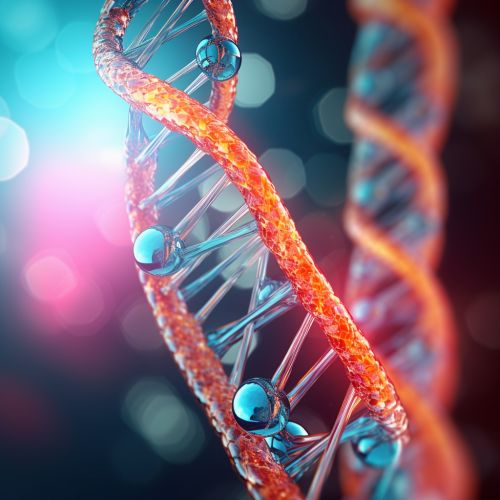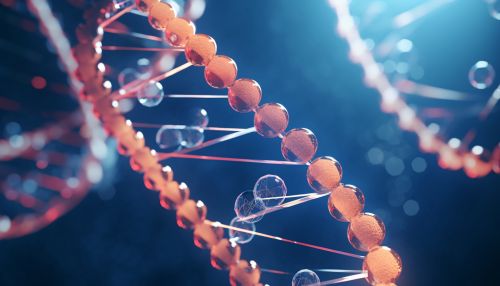Deoxyribonucleic acid
Introduction
Deoxyribonucleic acid (DNA) is a molecule composed of two polynucleotide chains that coil around each other to form a double helix carrying genetic instructions for the development, functioning, growth and reproduction of all known organisms and many viruses. DNA and ribonucleic acid (RNA) are nucleic acids. Alongside proteins, lipids and complex carbohydrates (polysaccharides), nucleic acids are one of the four major types of macromolecules that are essential for all known forms of life.
Structure
The DNA molecule is a double helix, with the two strands coiled around each other. Each strand is composed of repeating nucleotide units, with each nucleotide consisting of a sugar (deoxyribose), a phosphate group, and a nitrogenous base. The four types of nitrogenous bases found in DNA are adenine (A), cytosine (C), guanine (G), and thymine (T). The order of these bases along the DNA strand encodes genetic information.


Function
DNA serves as the genetic material for all living organisms. In eukaryotic organisms, DNA is located in the cell nucleus, while in prokaryotic organisms, it is found in the cytoplasm. DNA molecules carry the genetic instructions used in the growth, development, functioning, and reproduction of all known organisms. The sequence of bases in a DNA molecule codes for the sequence of amino acids in proteins, which are the main structural and functional molecules in cells.
Replication
DNA replication is the process by which a DNA molecule is copied to produce two identical DNA molecules. This process is essential for cell division and is the basis for biological inheritance. The double-stranded structure of DNA provides a simple mechanism for DNA replication. Each strand of the original DNA molecule serves as a template for the production of its counterpart, a process referred to as semiconservative replication.
Genetic Code
The genetic code is the set of rules by which information encoded in genetic material (DNA or RNA sequences) is translated into proteins (amino acid sequences) by living cells. The code defines how sequences of nucleotide triplets, called codons, specify which amino acid will be added next during protein synthesis. With some exceptions, a three-nucleotide codon in a nucleic acid sequence specifies a single amino acid.
DNA Sequencing
DNA sequencing is the process of determining the precise order of nucleotides within a DNA molecule. It includes any method or technology that is used to determine the order of the four bases: adenine, guanine, cytosine, and thymine. The advent of rapid DNA sequencing methods has greatly accelerated biological and medical research and discovery.
